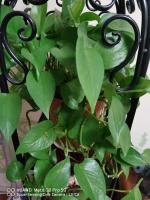How to Prune Back Tomato Plants
Tomato plants require adequate pruning to ensure healthy growth and an abundant yield. Pruning back tomato plants entail removing unnecessary leaves and branches to promote better air circulation, stronger stems, and more productive fruit formation. In this article, we will explore the steps involved in properly pruning back tomato plants for maximum yield.
Step 1: Determine the Type of Tomato Plant
Before you start pruning back a tomato plant, it is essential to determine the type of tomato plant you are dealing with. There are two types of tomato plants: determinate and indeterminate. Determinate tomato plants reach a specific height and produce fruit all at once, while indeterminate tomato plants grow continuously and produce fruit throughout the season.
Step 2: Identify the Suckers
The next step is to identify and remove the suckers. A sucker is a side shoot that develops between the stem and a branch. They appear as small growths, and if left unattended, they can drain the nutrients from the parent plant and reduce its overall productivity. Pinch off the suckers when they are about 2-3 inches in length, as they grow fast and can become challenging to remove later on.
Step 3: Remove the Bottom Leaves
The third step is to remove the bottom leaves from the tomato plant. These are the leaves that sit closest to the soil or the container. They are often the first to catch disease or attract pests. Removing these leaves will help improve air circulation, allowing the plant to grow better.
Step 4: Cut Back the Tops of the Plant
The fourth step involves cutting back the tops of the plant. It is especially true for indeterminate tomato plants that grow uncontrollably. You may need to cut off the top of the plant when it reaches the desired height, allowing it to focus on fruit production. This step also helps prevent heavy fruit from bending or breaking the stem, which can harm the plant's growth.
Step 5: Remove Damaged or Diseased Branches
The final step is to remove damaged or diseased branches. If a branch is damaged or diseased, it will not produce any fruit and can spread disease to other parts of the plant. Removing these branches helps promote better growth, as nutrients can be diverted to the healthy parts of the plant.
In conclusion, properly pruning back tomato plants is essential to promote healthy plant growth and maximize fruit production. By following these five steps, you can improve air circulation, strengthen the stems, and eliminate pest and disease problems that can hamper your harvest.

 how many times do yo...
how many times do yo... how many planted tre...
how many planted tre... how many pine trees ...
how many pine trees ... how many pecan trees...
how many pecan trees... how many plants comp...
how many plants comp... how many plants can ...
how many plants can ... how many plants and ...
how many plants and ... how many pepper plan...
how many pepper plan...






























